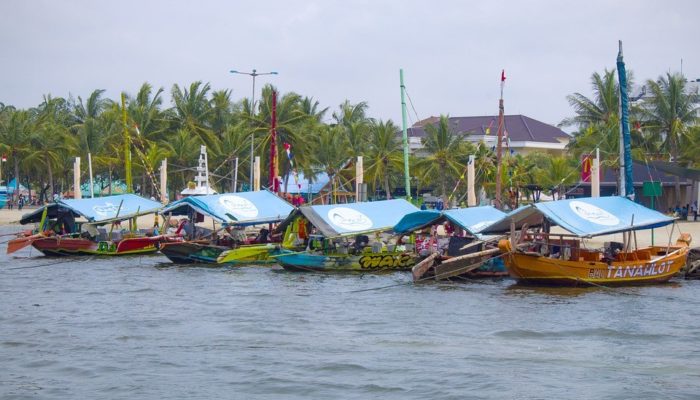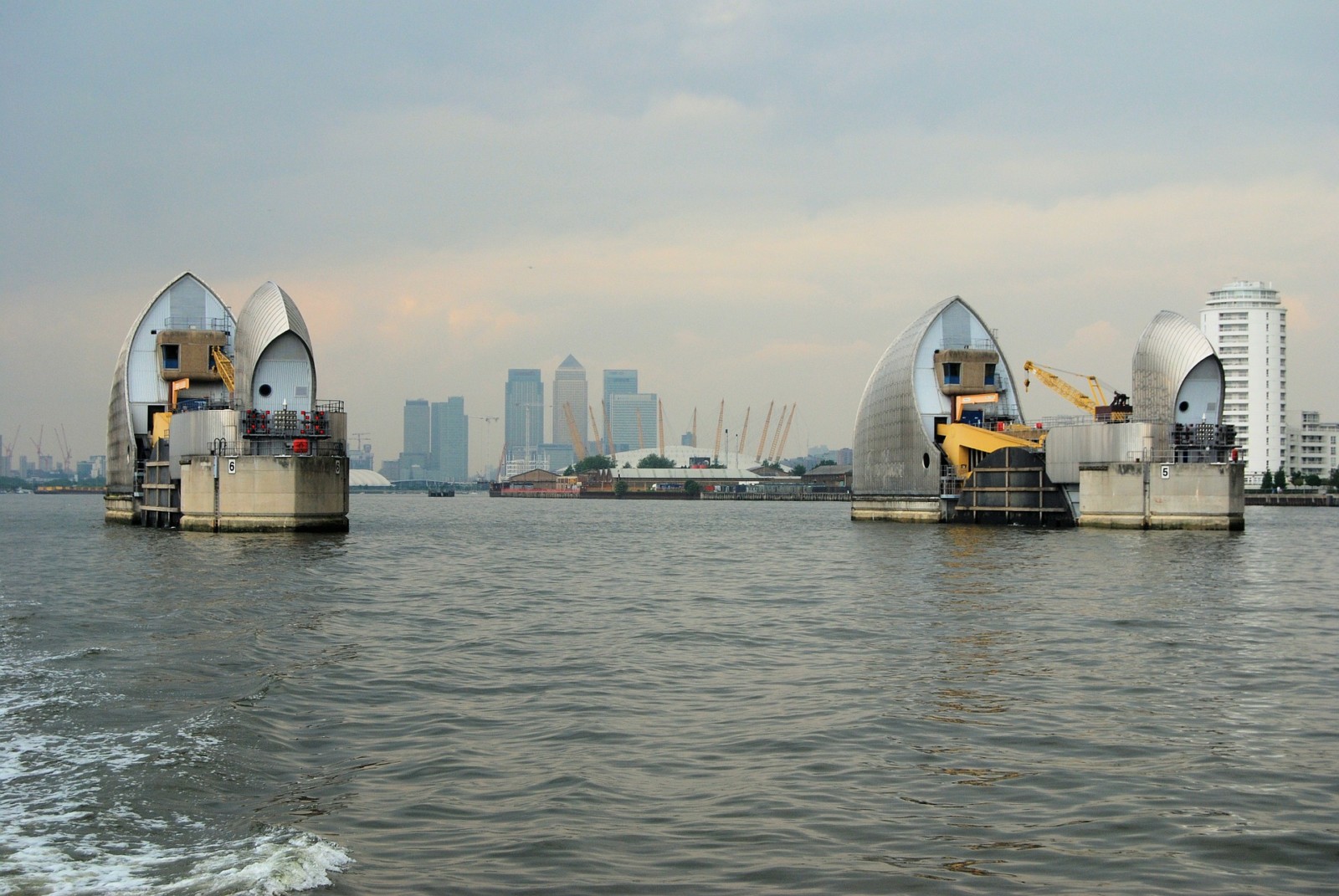
What are cities doing to mitigate rising sea-levels? What are the numbers behind the related challenges? In our August ‘Coast’ month, Heather Britton focuses on sea-level rise in the coastal cities of Jakarta, Lagos and London, where barriers and new islands are likely proposed solutions, even if they seem inadequate. [Editor’s note: This post reflects Heather’s personal opinions. These opinions may not reflect official policy positions of Geology for Global Development.]
It is safe to say that the impacts of climate change will be felt in some parts of the world more than others, and that in many regions these impacts are already making themselves apparent. One of the inevitable consequences of global warming is rising sea levels, caused by the dual effects of melting ice caps and the expansion of water volume in the oceans with increased temperatures, amongst other factors. In this week’s blog, I intend to focus on three cities which are under threat from flooding due to sea-level change, and look at how they are coping with the problem of sinking into the sea.
Jakarta
Jakarta is the world’s fastest sinking city, sinking on average 15 cm every year.
Jakarta is the world’s fastest sinking city, sinking on average 15 cm every year. Situated next to the Java sea, and home to 30 million people, there is a very real danger that this city will soon be completely submerged. The source of the problem is not, however, purely sea-level rise, but also to the fact that the city itself is sinking. This is not a purely geological issue and relates to a lack of sources of clean drinking water in the capital. The surface drinking water sources are too polluted to be considered safe places to drink, and a significant number of people are forced to dig their own illegal wells in order to access the cleaner, groundwater reservoirs. Draining the aquifers on which the city rests is causing the gradual subsidence of the region, but until clean drinking water is available to even the poorest of Jakarta’s residents, the problem is likely to continue into the future.
Current measures to combat the flooding are minimal, although various government officials have tried and failed to make a difference, for example by beginning a clean-up of waterways in the city and setting out plans to develop at least a rudimentary sewage system. The city’s most ambitious move has been the construction of the city’s coastal wall (which will likely be submerged itself by 2030). This has been constructed in collaboration with the Dutch government in a project called the National Capital Integrated Coastal Development program. A further idea associated with this project is to put an even larger sea wall off the coast of Indonesia, essentially cutting off Jakarta from the rest of the Java sea. Critics, however, say that without solving the problems that are leading to flooding within the city, building larger and larger barriers to keep out the sea is likely to be ineffective.
Lagos
A large-scale idea to grow the economy in Lagos is to create a new financial centre, on a new ‘island’ called Eko Atlantic.
Lagos (Portuguese for lakes) is one of the most populous cities in Africa. Climate change has contributed to extreme storms, rainfall and rising sea levels, aggravating a flooding problem that has severely affected this country for decades. The people of Lagos are living on what is essentially a series of islands. Much of the city was built on top of swampland, which has since been reclaimed and settled, destroying one of the barriers which would have protected the city from the ever-encroaching ocean. Poor infrastructural planning has meant that most of the ground surface in the city is impenetrable, and water simply has nowhere to go but remain on the surface, taking days to drain away and leaving thousands impacted by flooding year upon year. One example of this is the terrible flooding that the city experienced in 2012.
A large-scale idea to grow the economy in Lagos is to create a new financial centre, on a new ‘island’ called Eko Atlantic. Plans for this island have, to some extent, considered the flooding risk – the centre will be surrounded by a sea wall – but this would likely worsen the flooding situation elsewhere. The effect on the poor, who make up 70% of the city’s population, would be greatest, as the slums of the city sit in the city’s lagoon regions where floodwater is most likely to pool and cause the greatest disruption to residents.

The Thames barrier in London, Stevebidmead on pixabay.
When constructed, it was thought that this barrier might be closed every 2 – 3 years. The current rate of closure is currently double this, at 6 – 7 closures a year, and this is only likely to increase.
London
During the last ice age, the North of the UK was weighed down under the weight of the ice that was amassed there. After this ice melted, isostatic rebound has resulted in the uplift of Scotland by ~ 1 mm, accompanied by the sinking of the south, including the UK capital city of London.
The Thames Barrier was constructed in response to the flood risk in London and was made operational in 1982. The structure is designed to protect the city against 1 in 100-year flooding events. When storm surges combine with high tide, waters can rise by up to 2 m, making this one of the regular causes of flooding in the city. When constructed, it was thought that this barrier might be closed every 2 – 3 years. The current rate of closure is currently double this, at 6 – 7 closures a year, and this is only likely to increase. With the impact of climate change, sea levels could have risen up to 115 cm by 2100, if emissions continue at the current rate.
There is hope that this prediction will not be the case, however. The UK has committed to net-zero carbon emissions by 2050 and is the first country to do so. This demonstrates the ambition to combat climate change and minimise warming, but many argue that a 2050 target is not ambitious enough to prevent most of the adverse impacts that we are already beginning to see materialising around the world today.
Cities are going to have to adapt to increased flood risk if they are to survive in a world that has warmed by 1.5 degrees Celsius or greater, and these examples are just a few of those that are at risk. In achieving UN Sustainability Goals 11 (sustainable cities and communities) and 9 (Industry, innovation and Infrastructure), flood adaptation measures will be more essential than ever before.
**This article expresses the personal opinions of the author (Heather Britton). These opinions may not reflect an official policy position of Geology for Global Development. **

